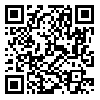Volume 14, Issue 8 (11-2014)
Modares Mechanical Engineering 2014, 14(8): 83-94 |
Back to browse issues page
Download citation:
BibTeX | RIS | EndNote | Medlars | ProCite | Reference Manager | RefWorks
Send citation to:



BibTeX | RIS | EndNote | Medlars | ProCite | Reference Manager | RefWorks
Send citation to:
Fathipour A, Mazaheri K. Modeling burn due to airbags deployment to evaluate the role of various parameters in producing burns. Modares Mechanical Engineering 2014; 14 (8) :83-94
URL: http://mme.modares.ac.ir/article-15-8164-en.html
URL: http://mme.modares.ac.ir/article-15-8164-en.html
1- Tarbiat Modares University
Abstract: (5307 Views)
Using of airbags is now increasing as a widely accepted safety measure designed to reduce morbidity associated with vehicle accidents. However, in many accidents the airbag, itself, causes the injury of passenger. One of the common injuries causes by air bag is the skin burning. Burns due to airbag deployment could be chemical or thermal. Chemical burns are not studied in this research. There are two mechanisms for thermal burns due to an airbag deployment; contact with the hot airbag itself, contact with the hot expelled gases from the airbag. Present research focus, is on numerical simulation of these two types of burns. A parametric study is done to investigate effect of airbag material, vent port diameter, number of vent ports and distance between driver and airbag. It was found that the most severe burns are due to PA66 and the less severe burns are due to PET. Increasing the vent port diameter and decreasing number of vent ports result burn in less skin depth. There is no clear relation between distance of driver with airbag and burns. Increasing the distance may cause less or more burn.
Article Type: Research Article |
Subject:
Combustion|Heat & Mass Transfer|Compressible Flow
Received: 2014/04/28 | Accepted: 2014/07/2 | Published: 2014/09/8
Received: 2014/04/28 | Accepted: 2014/07/2 | Published: 2014/09/8
| Rights and permissions | |
 |
This work is licensed under a Creative Commons Attribution-NonCommercial 4.0 International License. |







